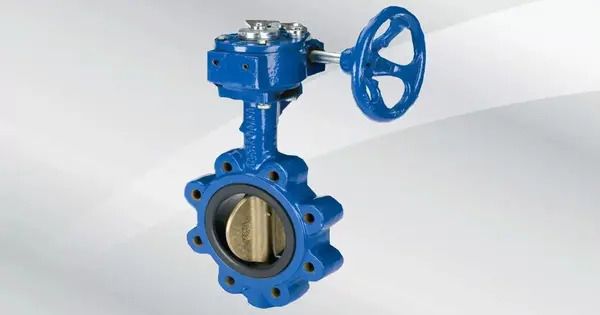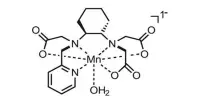A butterfly valve is a valve that isolates or controls the flow of fluid. The closing mechanism consists of a rotating disk. It is a sort of quarter-turn valve that employs a disc located in the center of the pipe bore and pivoting around a common axis. The disk can be rotated 90 degrees to allow or prevent passage through the pipe.
Principle of operation
The operation is similar to that of a ball valve, allowing for rapid shut-off. Butterfly valves are popular because they are less expensive than other valve types and are smaller in weight, requiring less support. The disc is located in the center of the pipe. A rod travels through the disc and connects to an actuator on the valve’s outside. Rotating the actuator causes the disc to turn either parallel or perpendicular to the flow direction. Unlike a ball valve, the disc is always present in the flow, causing a pressure drop even while open.
A butterfly valve is a type of quarter-turn valve. When the disc is turned a quarter turn, the valve becomes fully open or closed. A metal disc mounted on a rod is known as the “butterfly”. When the valve is closed, the disc is rotated until it completely blocks the path. When the valve is fully open, the disc rotates a quarter turn, allowing the fluid to flow practically unhindered. To throttle flow, the valve can be opened progressively.
Types
- Wafer Type: This type of butterfly valve is designed to fit between two flanges. It is usually thinner and lighter compared to other types.
- Lug Type: Lug-type butterfly valves have threaded inserts at both sides of the valve’s body. This design allows the valve to be installed between two flanges without needing additional bolts.
- Double Flanged Type: These valves have flanges on both sides and are suitable for end-of-line applications.
- Triple Offset: These are high-performance butterfly valves that feature an elliptical disc and a conical seat. They provide bubble-tight shut-off and are often used in high-pressure and high-temperature applications.
Advantages
- Quick Operation: Butterfly valves can be quickly opened or closed with just a quarter-turn of the handle or actuator.
- Cost-Effective: Generally, butterfly valves are less expensive than other types of valves.
- Space-Saving: Their compact design makes them ideal for applications where space is limited.
- Lightweight: Butterfly valves are usually lighter than other types of valves, making them easier to handle and install.
Disadvantages
- Not Suitable for Throttling: Butterfly valves are generally not recommended for throttling or regulating flow because they may cause excessive wear on the disc and seat.
- Limited Pressure and Temperature Range: Standard butterfly valves may not be suitable for very high-pressure or high-temperature applications.
- Seal Wear: The elastomeric seals used in butterfly valves can wear out over time, leading to potential leakage.
Applications
- Water Treatment: Butterfly valves are commonly used in water treatment plants for controlling the flow of water and other liquids.
- HVAC Systems: They are used in heating, ventilation, and air conditioning systems for controlling the flow of air and water.
- Chemical Processing: In chemical plants, butterfly valves are used to control the flow of various chemicals.
- Oil and Gas: They are also used in the oil and gas industry for controlling the flow of crude oil, natural gas, and other fluids.
Overall, butterfly valves are versatile and widely used in various industries due to their simplicity, cost-effectiveness, and ease of operation.
















